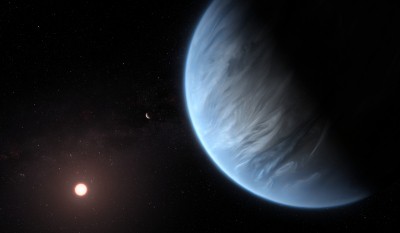Berlin, Oct 24 : In a unique study, astronomers have found compelling evidence that the planets begin forming while stars are still infants and they grow up together like siblings.
The high-resolution image obtained with the Atacama Large Millimeter/submillimeter Array (ALMA) shows a young proto-stellar disk with multiple gaps and rings of dust.
This new result, published in the journal Nature, shows the youngest and most detailed example of dust rings acting as cosmic cradles, where the seeds of planets form and take hold.
An international team of scientists led by Dominique Segura-Cox at the Max Planck Institute for Extraterrestrial Physics (MPE) in Germany targeted the proto-star IRS 63 with the ALMA radio observatory.
This system is 470 light-years from Earth and located deep within the dense L1709 interstellar cloud in the Ophiuchus constellation.
Proto-stars as young as IRS 63 are still swaddled in a large and massive blanket of gas and dust called an envelope, and the proto-star and disk feed from this reservoir of material.
According to the researchers, IRS 63 is different: at under 500,000 years old, it is less than half the age of other young stars with dust rings and the proto-star will still grow significantly in mass.
“The rings in the disk around IRS 63 are so young,” Segura-Cox said.
“We used to think that stars entered adulthood first and then were the mothers of planets that came later. But now we see that proto-stars and planets grow and evolve together from early times, like siblings,” Segura-Cox added.
Planets face some serious obstacles during their earliest stages of formation. They have to grow from tiny dust particles, smaller than household dust here on Earth.
The researchers found that there is about 0.5 Jupiter masses of dust in the young disk of IRS 63 further than 20 au (astronomical unit) from its center (at a distance similar to the Uranus orbit in our solar system).
That is not counting the amount of gas, which could add up to 100 times more material.
“It takes at least 0.03 Jupiter masses of solid material to form a planet core that will efficiently accrete gas and grow to form a giant gas planet,” the team said,
These results show that we must focus on the youngest systems to truly understand planet formation.
For example, there is growing evidence that Jupiter may have actually formed much farther out in the Solar System, beyond the Neptune orbit, and then migrated inwards to its present location.
“Similarly, the dust surrounding IRS 63 shows that there is enough material far from the proto-star and at a stage young enough that there is a chance for this Solar System analogue to form planets in the way that Jupiter is suspected to have formed,” the team noted.
–IANS
bu/ash

